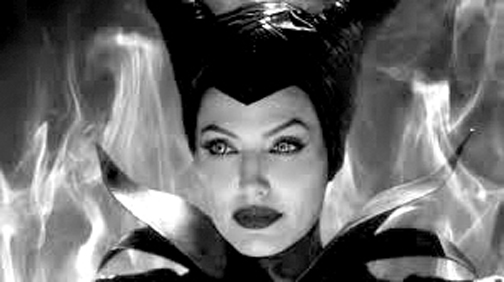By Susan JAMES
In the fantasy world ruled by the Disney-Marvel combine there has been a trend of late to reshape fairy tales for a contemporary audience. Working from a screenplay by Linda Woolverton, director Robert Stromberg’s “Maleficent” is a signature example. As most little girls know, fairy tales in their original form are not very kind to women. There are the powerless maidens from Snow White to Sleeping Beauty waiting for a prince to awaken them (for who is more powerless than a sleeping maiden?), and then there are the evil queens. “Maleficent,” a retelling of “Sleeping Beauty,” takes a new tack, combing the two in one character with mixed results.
The movie opens as all current fantasies do with scenes that blend “Avatar” with “Lord of the Rings,” throwing in a slight dash of “Harry Potter.” The young Maleficent is a charming fairy who lives in the Moors. For the filmmakers, the Moors are not actually moors (see “Wuthering Heights” for these) but an enchanted forest similar to Pandora in “Avatar.” All manner of sparkly bright fairies live here in happy harmony in a pastel-colored playground. Way across the way live the humans. From a distance, their land replicates the Hobbit-like Shire but they are capable of all manner of violence and evil. Led by the ghastly King Henry from his pointy castle on the hill, they fear the “rising power” (Maleficent) of the Moors and covet its treasures. So naturally they do what humans always do: They grab their weapons, mount up and go to war.
By now, young Maleficent has grown into Angelina Jolie and when she takes the screen, she is impressive. Dressed like Snow White’s evil stepmother, sporting a rakish set of ram’s horns, Jolie’s Maleficent is the embodiment of female power wrapped in a feminist fable of noble women and brutalizing men. Betrayed by the one human whom she befriends as a child, attacked by an army under the command of a greedy, fearful king, Maleficent sets out on a quest to take her revenge. But things don’t turn out the way either she or the audience expects.
To tell too much more of the story would be to spoil it. For the record, Jolie’s Maleficent is magnificent with cheekbones that could etch steel. Her counterpart, 16-year-old Elle Fanning, playing the soon-to-be sleeping beauty Princess Aurora, is not. It takes subtlety to make sweet innocence both believable and entertaining. Fanning’s Aurora is so sweet she leaves sugar stains on the screen and is blown away by Maleficent’s steely purpose. Maybe it’s the script.
With the exception of Fanning, the supporting cast is uniformly good with Imelda Staunton leading the troop of fairies who hide the baby Aurora to protect her from that enchanted spindle and South African actor Sharlto Copley is the increasingly mad King Stefan (Henry’s successor) obsessed with destroying Maleficent. Sam Riley has fun with the character of Diaval, Maleficent’s clever shape-shifting servant. In another recent trend, all of the actors, British or not, assume British accents. It doesn’t make the dialogue any more Shakespearean; however, Jolie and company have produced a visually striking parable about a strong woman and the men who fear her.
I could tell you how the story ends but then I’d have to turn you into a toad.
See you at the movies!

